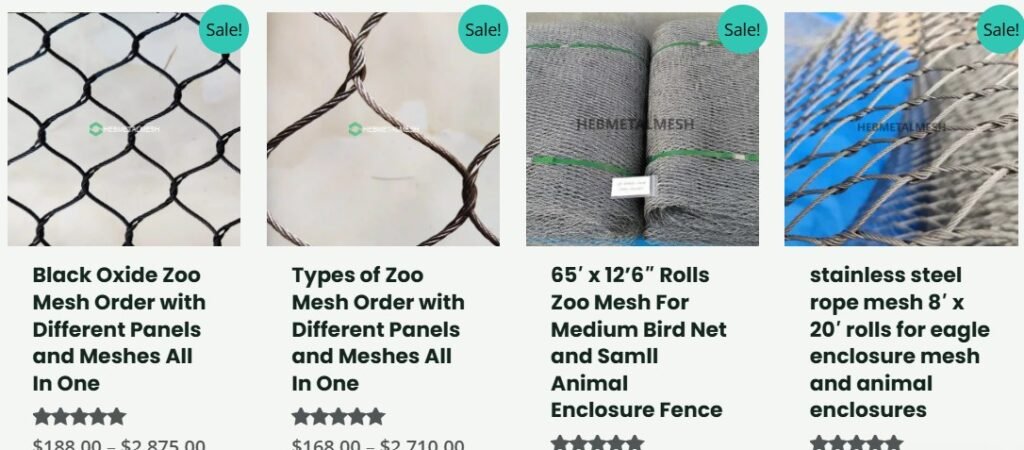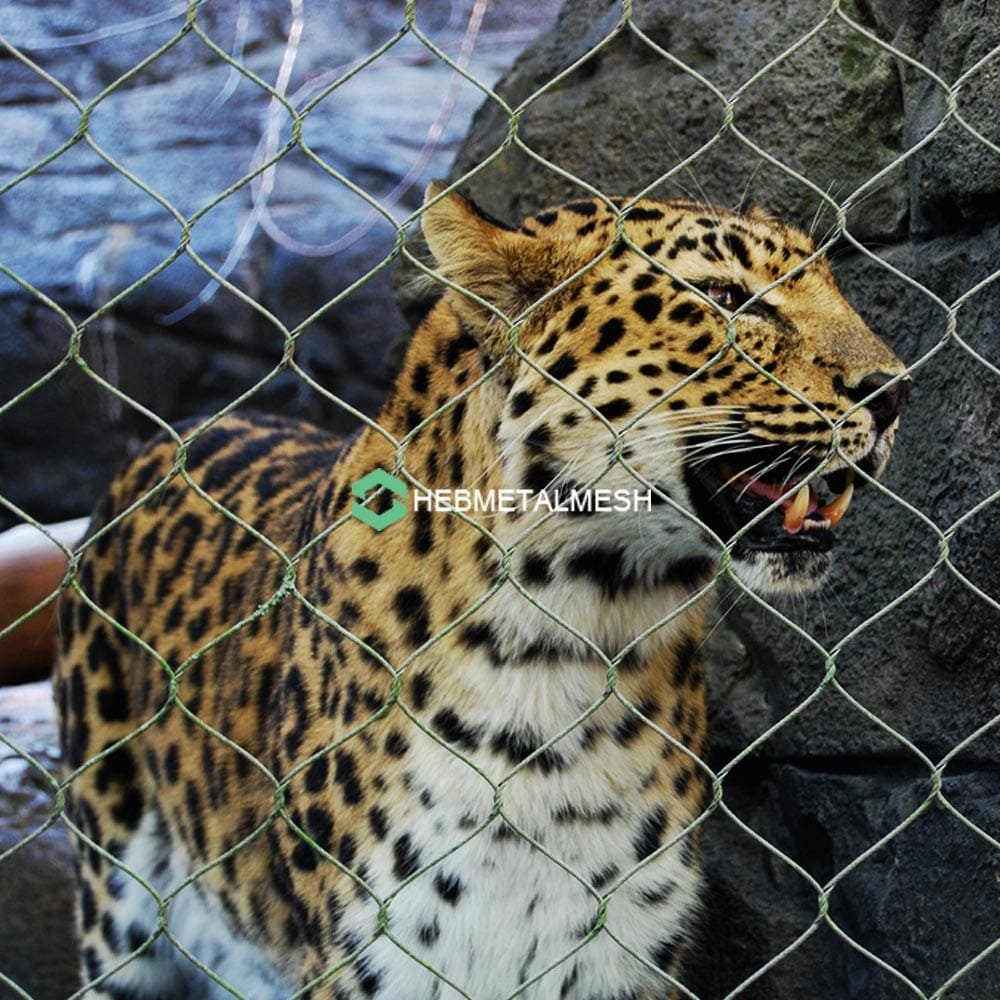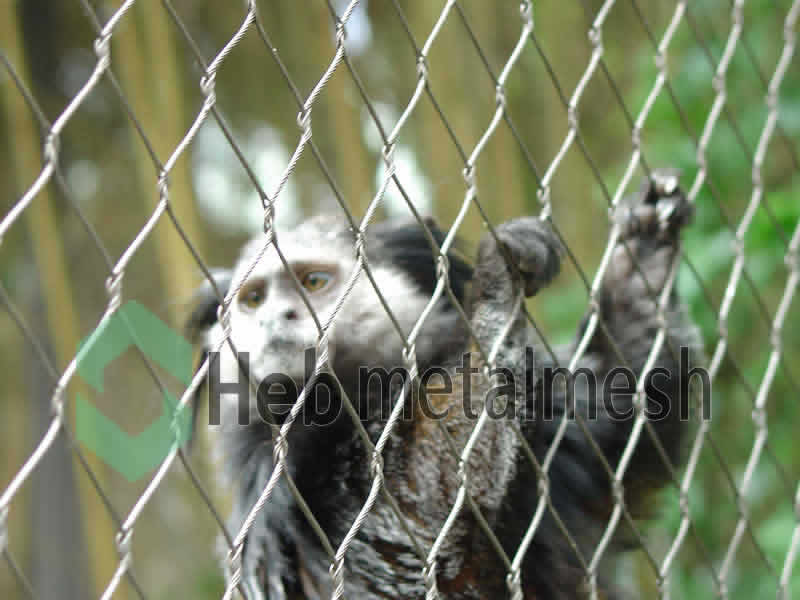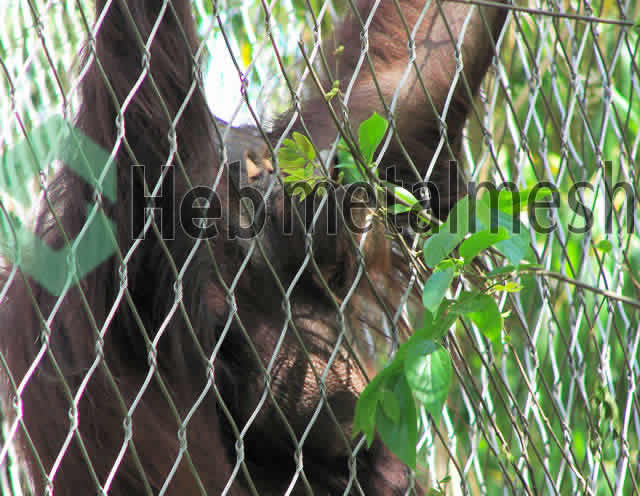Introduction to Animal Fencing
When it comes to managing animals in zoos and wildlife parks, proper fencing is an essential aspect that cannot be overlooked. The choice of fencing for animals serves as a critical barrier between wildlife and the public, ensuring the safety of both parties. Various factors need to be considered while selecting the appropriate type of fencing, including the species of the animals, their behavioral traits, and the specific layout of the enclosure. The right fencing not only protects animals but also enhances the experience for visitors, fostering a safe and engaging environment.
Animal fencing plays a fundamental role in conservation efforts, as well-maintained barriers can help prevent escapes and promote the security of sensitive species. For instance, larger animals such as elephants or big cats may require more robust fencing solutions compared to smaller animals like birds or rodents. Understanding the specific requirements of different species becomes paramount, as ineffective fencing could lead to devastating consequences for both the animals and the visitors. Designers and wildlife managers must also consider the aesthetic aspect, ensuring the fencing blends seamlessly into the natural habitat while fulfilling its functional purpose.
Moreover, the materials used in constructing fencing for animals vary significantly, with options ranging from metal mesh and chain link to wooden or electric fences. Each material has its strengths and weaknesses, with factors such as durability, visibility, and maintenance requirements influencing the selection process. The choice of fencing is not just about security; it also shapes how animals interact with their environment and how visitors perceive them. A well-designed fencing system can enhance visibility, providing visitors with a closer look at the animals while maintaining their safety. Thus, the significance of carefully choosing the right fencing extends beyond mere containment, impacting animal welfare and enriching visitor experiences simultaneously.
Understanding the Need for Strong Fencing
The safety and well-being of both animals and visitors is a paramount concern in zoos and wildlife parks. A robust fencing system plays a critical role in ensuring this safety, serving as the first line of defense against potential risks. One of the primary reasons for implementing strong fencing for animals is to prevent escapes. Animals, particularly larger or more agile species, may attempt to breach enclosures if the fencing is inadequate. A compromised enclosure can lead to dangerous situations for both the animals themselves and the humans in proximity.
Moreover, the presence of visitors introduces another layer of complexity that must be addressed through effective fencing solutions. Visitors, often curious to observe animals up close, can pose a threat if fencing does not provide a sufficient barrier. There are instances where individuals have attempted to get too close to the animals or even enter enclosures, driven by a desire for a unique experience. Inadequate or poorly designed fencing can inadvertently facilitate intrusions, which can have disastrous consequences for all parties involved, especially the animals, who may react unpredictably in stressful situations.
The consequences of escape incidents can range from injury to both humans and animals, to damage to the facility’s reputation and operations. Accordingly, investing in high-quality fencing for animals is not merely a regulatory compliance issue; it is a vital aspect of operational planning and an ethical obligation to provide a secure environment. With various fencing options available, it is crucial for zoos and parks to rigorously assess their needs by considering factors such as animal behavior, enclosure size, and the potential for human interaction. This thorough examination will ensure that the selected fencing technologies meet the demands of contemporary wildlife management.
Choosing the Right Material for Animal Fencing
When it comes to fencing for animals in zoos and wildlife parks, selecting the right material is paramount to ensure both the safety of the animals and the visitors. Various materials are commonly used in the construction of animal enclosures, each with its distinct advantages and disadvantages. Among these, wire rope mesh fencing has emerged as one of the most robust and suitable options available.
Wire rope mesh fences are particularly notable for their strength and versatility. Constructed from durable stainless steel or galvanized wire, this type of fencing is designed to withstand the element and the wear and tear that comes with having wildlife enclosed. Unlike traditional barriers such as wood or chain-link fencing, wire rope mesh offers a higher level of security that can effectively contain even the most agile or powerful animals. Its strong, interwoven structure makes it nearly impossible for animals to escape while allowing for safe visibility for visitors, enhancing the overall experience.
Moreover, wire rope mesh provides excellent durability, requiring significantly less maintenance compared to other materials. Unlike wooden fences that can rot or become compromised over time, wire mesh does not suffer from weather-related degradation. This longevity translates into cost savings in the long term due to reduced repair and replacement needs. In addition to durability, its flexibility in design opens up a range of options for the layout of enclosures, allowing zookeepers to create more natural habitats that mimic the animals’ native environments.
In summary, the choice of fencing material is crucial in zoos and wildlife parks. Wire rope mesh fencing stands out as an ideal solution due to its strength, durability, and enhanced safety, making it a practical choice for both animals and visitors alike. This material addresses the unique challenges posed by wildlife while promoting an engaging and secure atmosphere.
Key Considerations When Selecting Fencing
When selecting fencing for animals in zoos and wildlife parks, several critical aspects must be considered to ensure the safety and well-being of both the animals and the public. One of the foremost factors is the species of the animals being housed. Different species display varying behaviors and temperaments, which influence their ability to interact with containment structures. For example, predators may exhibit a propensity to escape if they see potential prey, whereas herbivores might require different fencing heights to accommodate their natural browsing behaviors.
Additionally, understanding the natural habitat and behaviors of each species is essential. Some animals may attempt to climb, dig, or jump, necessitating a rigorous evaluation of fencing materials and design. For instance, species known for their climbing abilities, such as monkeys or felines, may require taller fencing with features that prevent escape. Conversely, animals such as elephants need fencing that can withstand their significant physical power and natural instincts to push against barriers.
The environment in which the animals are housed also plays a crucial role in the selection process. Fencing must not only be durable and secure but also adaptable to the specific climatic conditions of the zoo or wildlife park. Materials must be resistant to environmental factors such as humidity, temperature fluctuations, and even corrosion. Moreover, the aesthetic aspect of the fencing should align with the park’s theme and provide an unobtrusive view, contributing to a more natural setting for the animals.
In conclusion, selecting the right fencing for animals involves a comprehensive evaluation of the species’ characteristics, their behavior patterns, and environmental considerations. Careful deliberation on these elements will contribute significantly to the effectiveness of fencing as a means of ensuring the safety and welfare of both animals and visitors alike.
Safety Features of Wire Rope Mesh Fencing

Wire rope mesh fencing is increasingly recognized as a vital component in the design and implementation of animal enclosures within zoos and wildlife parks. Its unique construction offers a combination of safety, durability, and visibility, making it an excellent choice for securing habitats while ensuring animal well-being and visitor experience.
The primary safety feature of wire rope mesh fencing lies in its robust design. Constructed from high-tensile stainless steel cables, this fencing is engineered to withstand significant force, thereby acting as a formidable barrier against potential breaches. Unlike traditional fencing methods, wire rope mesh is less susceptible to wear and tear, reducing the risk of sudden failures that could compromise enclosure security. This strength is crucial, particularly in environments housing larger or more intelligent species that may seek to escape.
Moreover, wire rope mesh fencing is designed to minimize the chances of animals becoming entangled or injured. The spacing between the cables is meticulously calculated to prevent any opportunity for an animal to escape while also ensuring that visitors can observe the wildlife without obstruction. This balance of transparency and security fosters an engaging environment, allowing for wildlife viewing while prioritizing both animal and human safety.
In addition to its structural integrity, the installation of wire rope mesh fencing incorporates ground and overhead anchoring systems that halt escape attempts before they can occur. These precautionary measures are crucial in maintaining a safe atmosphere for both the animals inside the enclosures as well as the visitors outside. Therefore, wire rope mesh fencing serves as an optimal solution for maintaining animal security while simultaneously enhancing the visibility and educational experience for zoo patrons.
Visitor Experience and Interaction
In wildlife parks and zoos, the selection of fencing for animals plays a crucial role in the overall visitor experience. The type and design of the fencing can significantly influence how visitors perceive and interact with the inhabitants of these facilities. Well-constructed animal enclosures allow for improved visibility, creating an engaging experience for guests. Transparent fences, such as glass enclosures or mesh barriers, enable close-up views of the animals without compromising their safety or wellbeing. This design approach not only enhances the aesthetic appeal but also fosters deeper connections between visitors and wildlife, thereby promoting educational opportunities.
However, while facilitating interaction, it is essential to prioritize safety for both the animals and the visitors. Fencing must effectively contain the animals while protecting individuals from accidental contact, which could lead to dangerous situations. Robust materials and innovative designs, such as curved barriers or perimeter fencing, help to maintain a safe distance, ensuring that the animals feel secure in their environment. It is a delicate balance that requires thorough consideration of both human enjoyment and animal welfare.
Additionally, the fencing’s design can evoke different emotions and responses from visitors. Naturalistic fencing that blends harmoniously with the environment can create immersive experiences, making visitors feel as though they are witnessing wildlife in their natural habitat. This can lead to heightened interest and concern for conservation efforts, fostering a sense of responsibility among guests. Conversely, stark or inadequate fencing may generate feelings of unease or detachment, detracting from the overall experience.
Ultimately, the thoughtful selection of fencing for animals not only enhances visibility and safety but can also transform visitor interactions into meaningful and memorable experiences. As zoos and wildlife parks strive to enrich their educational missions, the design and construction of animal enclosures will remain pivotal in attracting and retaining visitors while safeguarding the wellbeing of the creatures they cherish.
Cost Factors in Fencing for Animals Choices
The decision-making process when selecting fencing for animals in zoos and wildlife parks is heavily influenced by various cost factors. It is crucial to recognize that while initial expenditures may seem prominent, the long-term viability and maintenance costs significantly impact the overall financial planning. Fencing types range from basic wire mesh to specialized solutions like electric barriers or reinforced structures, each carrying differing price points that should align with the park’s operational budget and animal welfare standards.
When assessing the cost of fencing for animals, one must consider the quality of the materials used. High-quality materials, such as wire rope mesh, may require a larger initial investment compared to more economical options like traditional chain link or wooden fences. However, investing in durable fencing often leads to fewer replacements and reduced ongoing maintenance expenses. For example, weather-resistant materials typically withstand the elements better, leading to lower costs over time as repair needs are minimized.
Furthermore, the lifespan of the fencing plays a significant role in long-term cost savings. Cheaper alternatives may save money upfront but might necessitate frequent repairs or replacements, quickly negating any initial savings. In some scenarios, these frequent replacements can lead to increased disruption, impacting the animals’ environment and the park’s functionality. A well-chosen fencing solution that prioritizes quality can diminish these inconveniences while ensuring the safety and security of the animals.
Ultimately, the cost factors associated with different fencing options should extend beyond just the initial purchase price. A comprehensive evaluation that includes durability, maintenance, and longevity will ensure that parks and zoos make informed decisions in their animal housing efforts. Making the right choice in fencing for animals is an investment not just in infrastructure but also in the future welfare of the animals in captivity.
Maintenance and Longevity of Fencing Solutions
The selection of appropriate fencing for animals in zoos and wildlife parks is critical, not merely for safety but also for the longevity of the installation. Among the various materials employed, wire rope mesh has gained popularity due to its strength and flexibility. However, like any other fencing solution, it requires regular maintenance to ensure its effectiveness over time. Proper upkeep can prevent potential issues that may arise from wear and environmental factors.
Wire rope mesh fencing should undergo periodic inspections, ideally every few months, to check for any signs of corrosion, loose fittings, or physical damage. Keeping the fencing clean is equally important; debris and vegetation can accumulate against the structure, potentially leading to structural weaknesses or impediments to visibility. Utilizing a non-corrosive cleaner and a soft brush can help maintain the integrity of the mesh without causing damage.
Weather conditions can significantly impact the wear of fencing materials. In regions prone to harsh weather, it’s advisable to consider protective coatings for wire rope mesh to enhance its resistance to rust and deterioration. Regularly applying such treatments can extend the life of the fencing while ensuring that it continues to meet safety standards for the animals it houses.
Furthermore, the posts and supports that hold the fence in place should also be monitored. Wooden posts may require treatment or replacement over time, while metal supports should be examined for signs of rust or fatigue. An effective maintenance program includes keeping an inventory of the fencing materials and their condition, allowing for proactive measures to be taken before problems escalate.
In conclusion, maintaining fencing for animals, particularly wire rope mesh solutions, is vital for the safety of the animals and the longevity of the fencing itself. Regular inspections and upkeep ensure that these structures remain functional and secure in a dynamic wildlife environment.
Conclusion: Making an Informed Fencing Choice
In the complex world of zoos and wildlife parks, selecting appropriate fencing for animals is not merely a matter of aesthetics but one rooted in practical considerations that ensure the safety and wellbeing of both animals and visitors. The choice of fencing material, design, and height can greatly influence how effectively animals are contained while also enhancing the visitor experience. One of the most recommended materials in this arena is wire rope mesh fencing, which allows for minimal obstruction of sightlines while providing strong containment.
It is crucial for decision-makers in these settings to thoroughly assess the specific needs of the species being housed. Different animals have varying levels of agility, strength, and instincts, which must be taken into account to provide an environment that not only protects them but also aligns with their natural behaviors. Moreover, fencing for animals must also consider external factors such as the local wildlife that might pose threats, thus ensuring a secure perimeter is maintained.
Additional aspects such as climate impact, maintenance requirements, and financial implications should also play a vital role in the decision-making process. By evaluating these elements holistically, zoos and wildlife parks can arrive at a more informed decision regarding their fencing choices. Investing in high-quality materials, such as wire rope mesh, can significantly enhance the longevity and effectiveness of the fencing solutions implemented.
Ultimately, the right fencing for animals will not only ensure their safety but also contribute to a more enriching environment for both animal inhabitants and visitors. Taking the time to consider all factors discussed throughout this article will lead to more effective fencing solutions, paving the way for better animal management and visitor satisfaction in zoos and wildlife parks.


